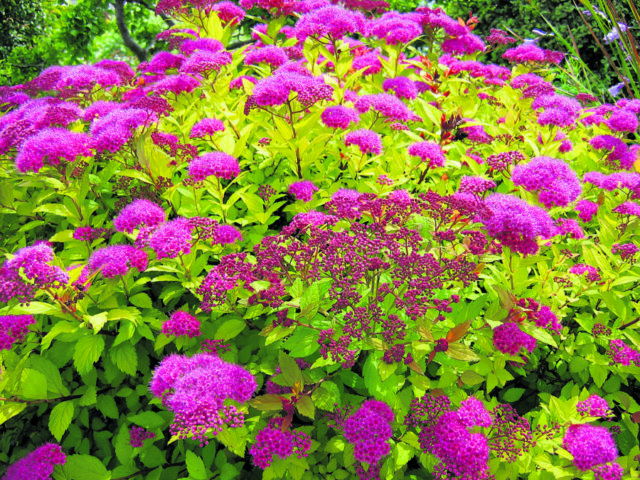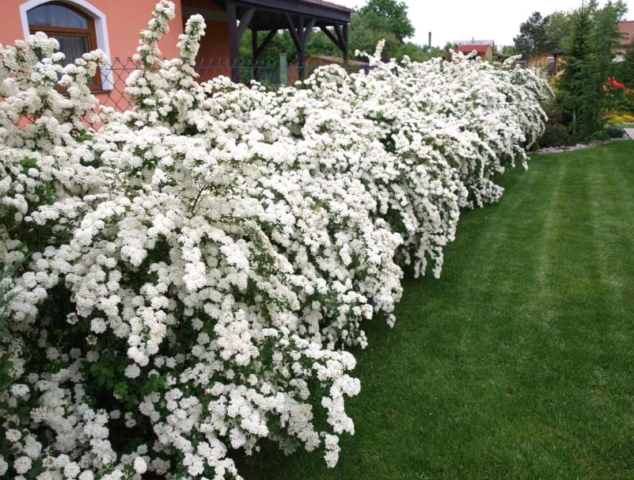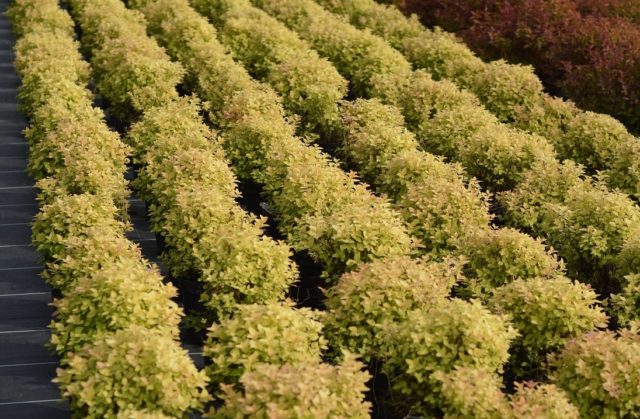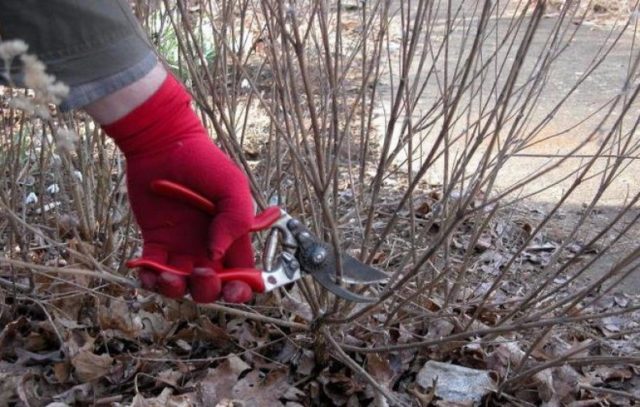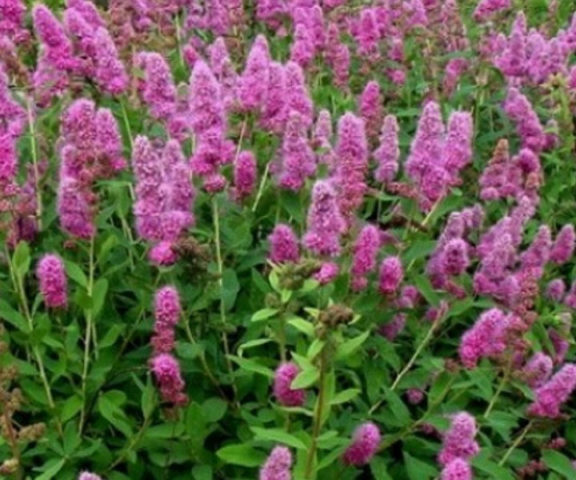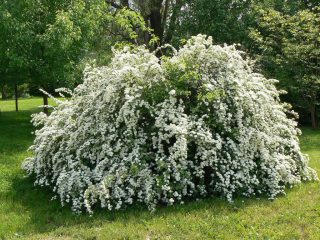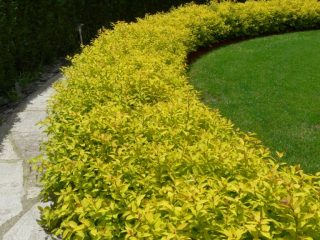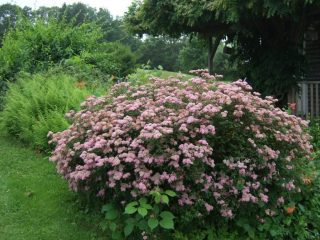Content
Willow spirea is an interesting ornamental plant. The botanical name comes from the ancient Greek word "speira", which means "bend", "spiral". This is explained by the fact that long, flexible branches give the shrub additional splendor. The second word in the name is derived from the shape of the leaves, which are outwardly similar to willow. Description and photos of willow spirea will be presented below.
Description of willow spirea
Willow spirea is a deciduous shrub. Refers to plants of the Spirea genus, the Pink family. The root system is shallow, fibrous. The foliage is elongated lanceolate. The apex is pointed. The surface of the sheet is smooth. The petioles are short. The base is wedge-shaped. Sharp edges may have cilia. The outer side of the leaf is dark green, the inner side is light green. The length, as a rule, is 5-7 cm, less often it reaches 10-11 cm, and the width is 1-3 cm.
Perennial has high frost resistance. Demanding on moisture, sun. It grows in soils of various compositions. The shrub grows rapidly. In the natural environment, it occurs in swampy areas, on river banks, flood meadows. It grows in North America, China, Korea, Japan.
Plant size
Willow spirea reaches a height of 1.5-2 m. The crown is spherical. The branches are bare. Slightly faceted, vertically oriented. Young shoots are yellow, light green in color. More mature branches are dark red, brown in color.
The healing properties of willow spirea
Spirea willow leaf is not only beautiful, but also useful. In medicine, leaves, young shoots, inflorescences, bark, buds, roots are used. The plant contains tannins, flavonoids, phytoncides, alkaloids, vitamins A, C, essential oil, salicylic acid, mineral salts. Due to the rich chemical composition of spiraea, willow leaf has the following properties:
- antimicrobial;
- anti-inflammatory;
- antipyretic;
- anthelmintic;
- antifungal;
- wound healing;
- pain reliever.
Decoctions and tinctures of willow spirea are used as remedies in folk medicine. They help with diarrhea, rheumatism, intestinal candidiasis.
When it blooms
Spirea willow blooms in the second half of June and ends in early autumn. Flowers bloom unevenly. The process can take up to a month and a half. Inflorescences are formed on the shoots of the current year. They are of a narrow pyramidal shape, similar to a cylindrical one. They consist of small flowers with yellowish pedicels, collected in a bunch. Panicles are formed along the edges of the shoots. The approximate length of the inflorescences is 12-25 cm.
The shrub is prized for its bright pink bloom. There are also lilac, pomegranate, burgundy shades of inflorescences. Rarely, but white spirea is found.
Fruit type
The fruits of spirea willow leaf look like polyspermous leaflets. Opening occurs first along the inner and then along the outer edge. Seeds are flat, winged, brown. Ripening occurs in 45-60 days. Seeds fall out of the leaflets.
Willow spirea in landscape design
The decorativeness and attractiveness of willow spirea continues throughout the season. The expressive shape of the crown and long flowering make it an indispensable element of landscape composition. This type of shrub is used in the form of a dense hedge. No less impressive pink willow spirea will look in a single planting. The plant is used as a decoration when creating an alpine slide.
Planting and caring for willow spirea
Despite the external attractiveness, willow spirea is unpretentious in care. It grows and blooms well under the most common conditions. The only thing to look out for is pruning the plant.
Preparation of planting material and site
For planting, it is advisable to choose 1-2 year old seedlings that can have an open or closed root system. Before planting a plant with closed roots, it is taken out of the container along with a lump of earth. Then moisturize abundantly. If the earthen lump is too dry, then it is necessary to soak it for a short time in warm water.
Seedlings with exposed roots should be tidied up. The first step is to trim off damaged or dry areas. Overly branched roots also require pruning. The aerial part is shortened by 1/3 of the length. To improve the survival rate, the root system of the spirea sapling is dipped in a mixture of clay and cow dung.
For willow spirea, sunny, open areas are selected. In partial shade, the plant is also able to grow, but the flowering will not be so abundant. The composition of the soil does not matter. It is preferable that it is fertile, loose and moist. The ideal option is sod or leafy land. The required pH is 6-7.
Planting willow spirea
For planting willow spirea in open ground, 2 seasons are suitable: spring and autumn. In the spring, it is important to plant the plant before the buds appear on the seedling, in the fall - after the foliage is shed. When using a group planting of spirea, the distance between the plants should be 50 cm. The presence of lime in the soil is unacceptable.
- A hole 50 cm deep is dug in the selected area.
- The depression should be larger than the diameter of the root system. In this case, the shrub will develop faster.
- A drainage layer of broken brick, crushed stone or expanded clay, 15 cm thick, is laid at the bottom.
- The bottom of the pit is covered with garden soil mixed with peat, and sand in proportions of 2: 1: 1.
- A spirea sapling is placed in the center of the recess and sprinkled with earth. The root collar is not deepened much, it should be 3-5 cm above the ground.
- The soil around the roots is carefully poured and tamped.
- At the end, 1-2 buckets of warm water should be poured under each bush.
- At the end of planting, the near-stem circle is mulched with peat.
Watering and feeding
Willow spirea is a drought-resistant plant that requires moderate watering. On average, 15-20 liters of water per week is enough for an adult culture. In a hot period, the number of waterings should be increased. Young shrubs need more frequent hydration until they take root. However, it is important to ensure that there is no liquid stagnation.
The optimal time for feeding is early spring, before the flowering of willow spirea. Fertilize it with a complex of mineral and organic substances. To do this, dilute 10 liters of mullein in 6 liters of water. Then 7-10 g of superphosphate is added to a bucket of the resulting mixture.
Pruning
The pruning procedure for willow spirea is performed at the end of flowering, that is, in the fall. However, faded shoots do not need to be shortened, since this will provoke the growth of lateral branches, on which small, expressionless flowers will appear.The shape of the bush will also be disturbed, and the effect of drooping flowering shoots to the bottom will be spoiled.
Summer flowering spireas begin to cut off with the arrival of spring and only those plants that are at least 4 years old. As a result, the bush will remain 20-30 cm tall. If this is not done, then willow spirea will lose its decorative shape, long branches will deviate to different sides, leaning towards the ground. And if you remove only the upper part of the shoots, then the young shoots will be extremely thin, with small inflorescences.
Preparing for winter
As a rule, willow spirea in winter does without shelter. It is able to withstand frosts down to - 45-50 ° С. However, if a harsh and snowless winter is expected, then it is worth providing the plant with a correct wintering. The near-stem circle is mulched with hay or straw, the roots are covered with dry spruce branches. The branches are tied into a bunch and covered with burlap or agrofibre.
Reproduction
Willow spirea reproduces in 3 main ways: cuttings, layering and seeds.
- Seed material is planted in seedling boxes in March-April. After 10-12 days, the first shoots will appear, and after 2-3 months the seedlings are dived and planted in open ground. Young spireas will actively develop subject to simple agrotechnical measures. The shrub will bloom for 2-3 years.
- To preserve all varietal characteristics, the cuttings method should be used. Plants grown this way bloom much faster. Spirea willow leaf will be covered with flowers for the next season. Partially lignified shoots of the current year are used as planting material. Areas 10-15 cm long are required. The lower part of the cutting is dipped in a rooting preparation and planted in the ground. If the procedure is performed in July, then by the fall a full-fledged root system will appear.
- The following propagation method is used if few young plants are required. To do this, during the period of foliage blooming, the side branches must be bent to the ground. Pin them with pegs and sprinkle with soil. During the season, maintain a moist environment around the branches and by autumn you can get independent plants.
Diseases and pests
The shrub has a strong immunity to various bacterial and fungal diseases. However, great damage to the plant is caused by pests: spider mites, aphids, rose leafworm, slugs, pink miner.
Competent care of willow spirea helps to cope with them: watering, fertilizing, loosening the soil, pruning, as well as maintaining cleanliness on the site. The fight against harmful insects implies timely treatment with chemicals.
- Spider mite. Its presence is betrayed by the holes made in the inflorescences, premature drying and foliage falling off. The pest is active in dry, hot weather. 0.2% phosphamide, 0.3% malofos, 0.2% acrex help to cope with it.
- Leaf roll. Appears at the end of May. The parasite chews out all the green tissue on the leaves. His preparation is completely destroyed by 0.1% pyrimor.
- Aphid. It sucks out juice and nutrients from leaves, petioles, young shoots. The treatment is carried out with a soapy, tobacco solution.
Conclusion
Willow spirea is a real find for the gardener. Numerous uses and ease of care make the shrub more and more in demand. This culture is able to decorate not only a personal plot, but also the streets of the city. Grow it up for a novice florist.
